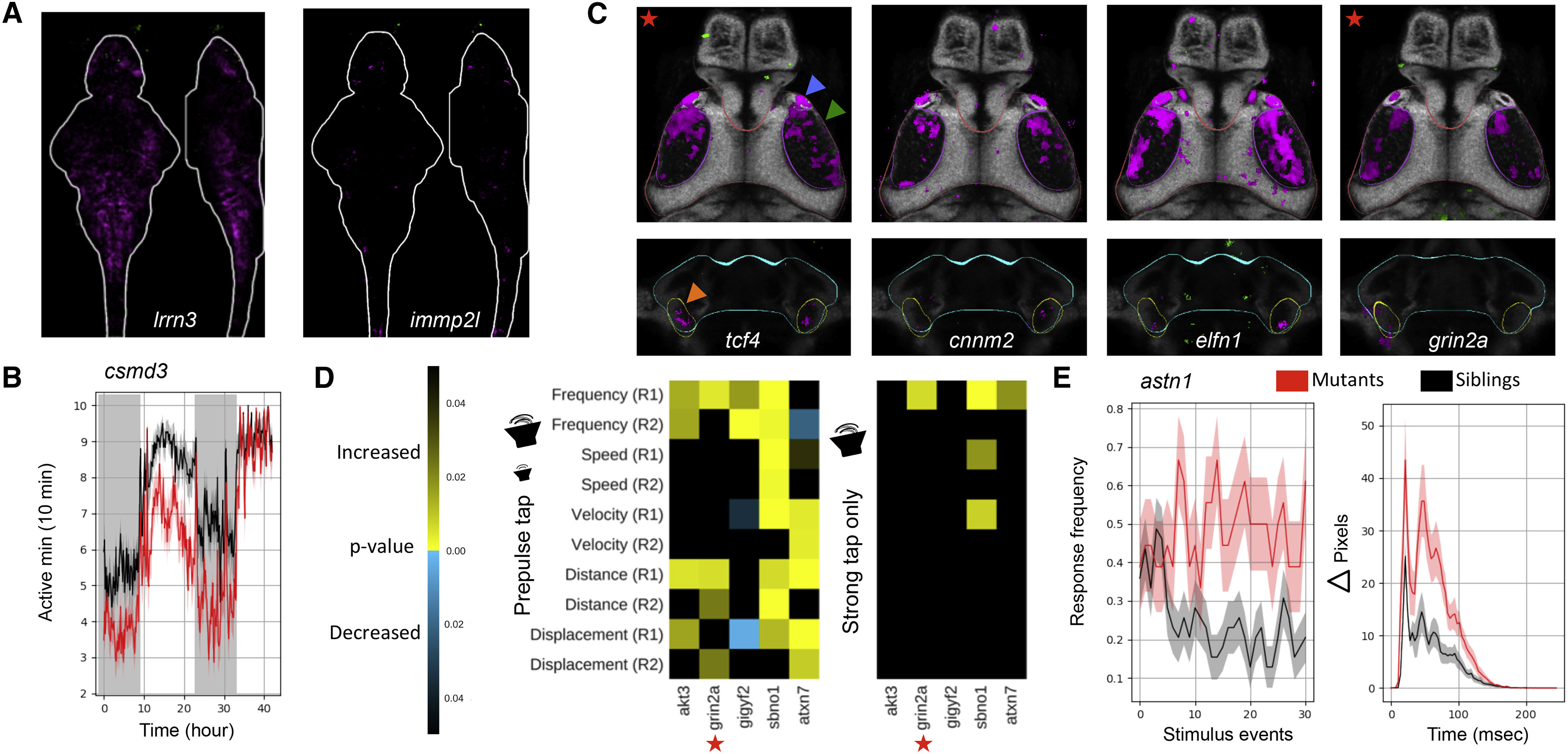Fig. 5
Nominating Candidates in Multi-Gene Loci by Phenotype
The number of animals used in all imaging experiments is available in Table S2 and on stackjoint.com/zbrain.
(A) Brain activity data (sum-of-slices projection) for lrrn3 and immp2lmutants.
(B) Movement frequency for csmd3 mutants. P value = 0.0001; N = 30 +/- , 29 -/-.
(C) Mutants with tectum (green arrow) and retinal arborization field AF7 (blue arrow, Mesencephalon___Retinal_Arborization_Field_7_AF7 on stackjoint.com/zbrain) phenotypes (representative slices). Mutants with retinal arborization field AF7 signal also display signal changes in the same direction in a small subregion of hypothalamus (orange arrow, Diencephalon___Hypothalamus_Gad1b_Cluster_3_Sparse located within cyan Diencephalon___Intermediate_Hypothalamus; see regions on stackjoint.com/zbrain). See also kmt2e, znf804a, cacnb2b, and ambra1(both areas decreased), and snap91, akt3b, and satb1 (both areas increased) on stackjoint.com/zbrain.
(D) Prepulse inhibition phenotypes for five mutants. These mutant phenotypes are specific to the strong prepulse tap (Figure 2J) and do not represent a general increase in tap sensitivity to strong taps (right heatmap). Response features were calculated only on strong tap responses where the weak tap did not elicit movement. See also Figure S3.
(E) Habituation phenotype of astn1 mutants. Response frequency to tap events occurring every two seconds is shown in left graph, and the magnitude of responses occurring during the habituation paradigm in the right graph. P value for frequency metric = 0.0018; merged p value for the day tap habituation 2 section = 0.015 with 20/47 significant metrics; N = 36 +/- , 18 -/-.
Reprinted from Cell, 177(2), Thyme, S.B., Pieper, L.M., Li, E.H., Pandey, S., Wang, Y., Morris, N.S., Sha, C., Choi, J.W., Herrera, K.J., Soucy, E.R., Zimmerman, S., Randlett, O., Greenwood, J., McCarroll, S.A., Schier, A.F., Phenotypic Landscape of Schizophrenia-Associated Genes Defines Candidates and Their Shared Functions, 478-491.e20, Copyright (2019) with permission from Elsevier. Full text @ Cell

